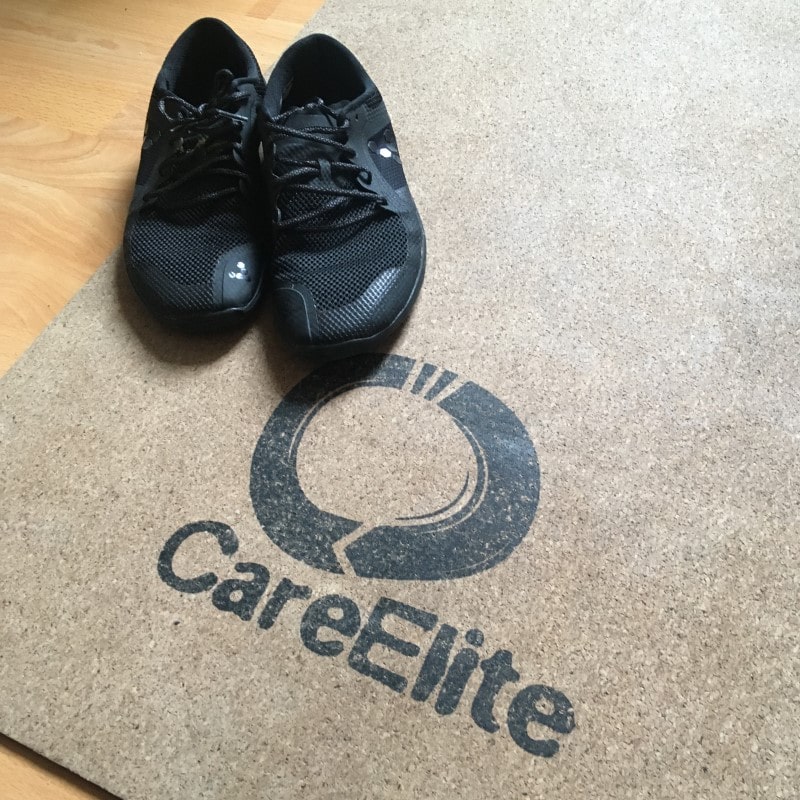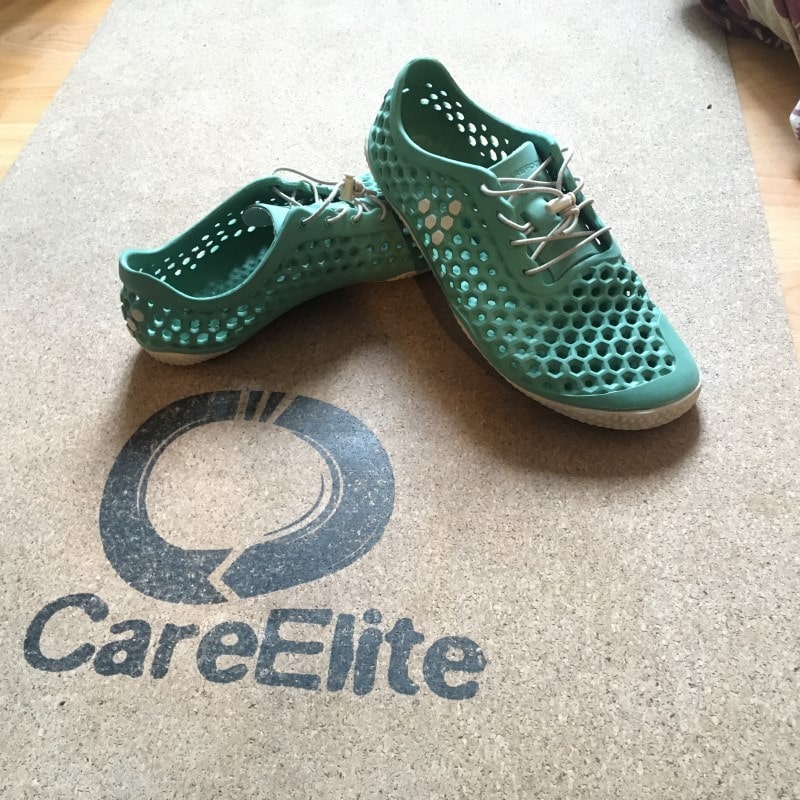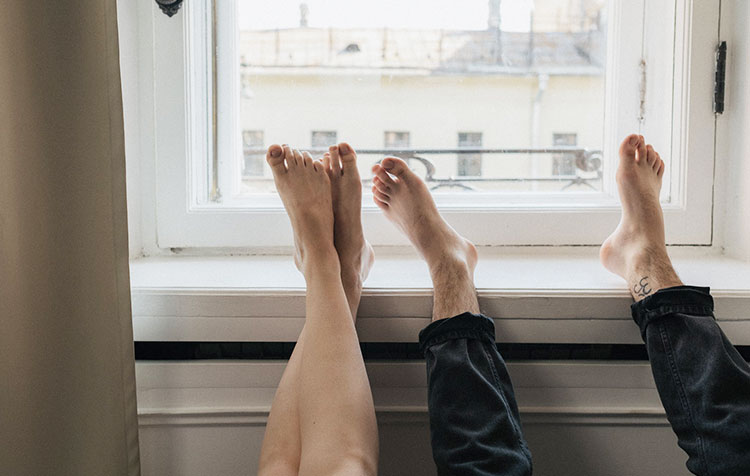Are barefoot shoes healthy? And what are barefoot shoes actually and how do they differ from toe shoes? How are barefoot shoes constructed? Can barefoot shoes be used as healthy slippers? What exactly are the benefits of barefoot shoes? Why barefoot shoes affect your posture and Barefoot running is healthier than running with conventional shoes and the barefoot shoe experiences I have made, you will now learn in this article.
What are barefoot shoes?
Distinction barefoot shoes vs. toe shoes
Barefoot shoes are generally distinguished between toe shoes and normal barefoot shoes. Toe shoes have a separate "cave" for each toe and thus guarantee ultimate toe freedom.
Normal barefoot shoes are wider in the forefoot area than conventional shoes, but do not have separate cavities for the toes. They are therefore somewhat more inconspicuous, but still offer a high toe clearance due to the wide cut.
I introduce barefoot shoes here in the article and show why barefoot shoes are healthy.
Characteristics of barefoot shoes
Barefoot shoes are characterized by barefoot-like conditions. These include
- no footbed
- ultra thin sole
- Toe clearance
- minimum blast
- soft design
- breathable
- flat shoe
Barefoot shoes as healthy slippers
Barefoot shoes are an excellent alternative as healthy slippers. Their high toe clearance and soft construction make them very comfortable. Most models are breathable on top of that, which makes them more comfortable to wear.
You can also use barefoot shoes at home to optimize your walking technique and thus use barefoot shoes as healthy slippers.
There are models designed specifically as healthy slippers or, for example, the Primus Lite from Vivobarefoot (further down I present the shoe). In the Primus Lite you can slip in super fast and thus it is also super suitable for home. The same applies to the Ultra Bloom 3 (also to the shoe I write more later), with both shoes I have made good barefoot shoe experiences when used as a slipper.
Barefoot shoes in gym
Barefoot shoes can also be worn well in the gym. Especially for leg exercises like squats or lounges, but also deadlifts, barefoot shoes offer a very high control and close contact with the ground. At the same time, they also promote flexibility, as they have no restrictions on mobility.
One disadvantage of barefoot shoes in the gym can be that you will lack the stabilizing effect of the shoes, especially in the beginning. However, as soon as your foot muscles have strengthened and become accustomed to the new load, your muscles will take over the stabilization.
Improving sensorimotor function (more on this below) is a real advantage in the gym, especially for leg exercises, because you simply perceive and feel more in the area of your feet.
In the gym, barefoot shoes are healthy for your feet. I can recommend the Primus Lite or the Ultra 3 Bloom. I have already worn both pairs in the gym and also made positive barefoot shoe experiences. I find especially in squats you experience a whole new what stabilization from the foot means.
Why barefoot shoes are healthy - the advantages
Are barefoot shoes healthy? What benefits do they provide? Do barefoot shoes reduce stress on joints? What makes barefoot shoes healthy? How do barefoot shoes affect foot muscles and circulation? How do perception and walking technique change when wearing barefoot shoes?
We'll get to the bottom of these questions now, and I'll show you what benefits wearing barefoot shoes can have for you.
Reduction of stress on hip and knee joints
Less stress on the knee and hip joint than when you heel strike, as is common with (running) shoes. A research report on barefoot running was published in the Journal of Injury, Function and Rehabilitation. The report compares the stress on knee and hip joints when running barefoot and jogging.
The load on the hips is 54 % lower when walking barefoot. The load on the knees is reduced by around 37 %. The main advantage of barefoot running is the lower load on hip and knee joints. Barefoot shoes can therefore effectively reduce the load on hip and knee joints.
The reason for the reduction of the load on the joints is the different tread. Barefoot, you first step on with the ball of the foot or midfoot. This causes a natural spring mechanism of the foot to act, which significantly reduces the impact of the heel. Only then does the heel hit the ground and pass on the weakened impact of the impact to the hip and knee joints.
Thus, barefoot shoes are healthy and beneficial for your hip and knee joints. The slightly different appearance has been one of my personal barefoot shoe experiences, especially when jogging.
Strengthening the muscles of the foot
Due to the different load and reduction of the load on joints and bones, muscles, tendons and ligaments are more stressed. This means that the foot muscles, as well as the lower leg muscles up to the pomus muscles are trained.
Strengthening your foot and leg muscles has the effect of improving your overall posture, as your lower limbs are the foundation of your posture. Again, it can be said that barefoot shoes are healthy.
Improved blood circulation through healthy barefoot shoes
Due to the higher load on your muscles, feet and legs are also better supplied with blood. This is especially interesting for people with circulatory disorders. But also if you do a lot of sports, a good blood circulation is advantageous.
Improvement of the running technique
Regular running with barefoot shoes automatically improves your running technique. Over time, this also has more and more effect on your running technique in other shoes. The running technique of course also has a great influence on the posture and so you can reduce the load on your joints.
Improved perception
Due to the thin and flexible soles, you can perceive the ground much better with your feet. With normal shoes you hardly notice on which surface you move. With barefoot shoes it is completely different, these protect you on the one hand, but are still so thin that you consciously perceive the ground.
This improves sensorimotor function, i.e. the interaction of nerves and muscles. So you gradually create a new feeling for your feet, their movements and sensations.
This is particularly advantageous for people who are close to nature, as you can perceive more of nature and your immediate surroundings. My personal barefoot shoe experience is also that you perceive the underground in a whole new way.
Advantages over "real" barefoot running
Now, of course, you could say that you can just walk barefoot without wearing shoes, but in some situations it is better to wear shoes.
On some occasions it is appropriate or expected to wear shoes. Meanwhile, there are really many good barefoot shoes that you can wear even on official occasions.
In addition, the barefoot shoes protect against sharp objects and stings and thus offer an advantage especially offroad.
In winter, of course, it is often too cold to leave the house without shoes. When it's cold, lined and thicker barefoot shoes are particularly suitable.
If you are already convinced, it goes here to the Vivobarefoot Onlineshop*.
Tip: If you still Reasons for regular walks then be sure to check out the linked post as well!
What should you consider when running with barefoot shoes?
First of all, I would like to give you some tips based on my own experience.
Start slowly
At the beginning you should not overdo it, because it will be an unaccustomed load for your feet and legs. Therefore, it is also advisable to start with barefoot shoes on soft surfaces such as grass, sand or forest paths. These surfaces give a little and reduce the new stress on muscles and tendons.
Running long distances with barefoot shoes right at the beginning, such as jogging, can lead to overuse injuries. My personal barefoot shoe experience was that after the first time jogging with barefoot shoes I had a strong muscle soreness in the back of the foot and lower part of the calf. So you should take it slow at first.
Observe running technique
It is also important that you pay attention to your running technique when wearing barefoot shoes. You should step in the same way as when you run barefoot. That is, you step with the ball and midfoot, instead of with the heel.
In my barefoot shoe experience, you already subconsciously tread correctly when you wear barefoot shoes while jogging. When walking normally, I had to focus more on the correct tread.
Keep moving
For starters, it's also especially important to wear the shoe when you're in motion, if possible. The thin sole is much less soft when standing than in conventional shoes. Therefore, it can be uncomfortable if you stand a lot in barefoot shoes.
Increase cautiously
By carefully increasing the amount of time you wear your barefoot shoes and switching to different surfaces, you make the transition easier for your foot. The more you get used to barefoot running and the new running technique, the more you will be able to run "real" barefoot or wear barefoot shoes.
Seek advice if unsure
However, if you are unsure whether barefoot shoes are suitable for you and your feet, you can visit an orthopedist and ask him for advice. He will then advise you comprehensively on the subject and may also perform a running analysis on you.
Various barefoot shoe models

I myself have two pairs of barefoot shoes. The Primus Lite Men in all black from Vivobarefoot and the Ultra 3 Bloom from Vivobarefoot.
The Primus Lite is a casual shoe that you can also wear for running. In all black, it is rather inconspicuous and so a good companion in everyday life. You can also wear the Primus Lite at home as healthy slippers, because you can slip into the shoe very quickly. The Primus Lite is pleasantly light and airy. It is therefore particularly suitable for the warmer months or Indoors as healthy slippers or for example in the gym. The Primus Lite is vegan and available for women and men.
Vivobarefoot Ultra 3 Bloom sustainable barefoot shoes
I would like to pay special attention to the Ultra 3 Bloom, which is made 53 % from an algae-based fabric. The material saves petroleum, as well as carbon dioxide emissions, making it one of the best sustainable barefoot shoes. It can be worn for running as well as in the water or outdoors. The Ultra 3 Bloom is especially great for water sports. The shoe is also vegan and available for women and men.

I myself use the Ultra 3 Bloom as a slipper, shoe in the gym and will wear it next summer especially for walking the dog. My experience so far with the Ultra 3 Bloom is consistently positive and I also like the eye-catching design.
There are also barefoot shoes for official occasions. For example, the Vivobarefoot Lisbon for men, which is unfortunately not vegan. For women there are elegant ballerinas from Vivobarefoot, which unfortunately are also not vegan.
Even outdoors, for example for hiking, you do not have to do without barefoot shoes. Here there are different models, from low shoes to boots.
The Gobi II is an elegant winter shoe, which is also vegan. Especially in the cold season, it is important to protect the foot from the cold. For women, the Gobi II is available as a Hi Top.
And where to buy the barefoot shoes?
Convinced? You want to try barefoot running? Then go here to the Vivobarefoot Onlineshop. Otherwise, there are also many Vivobarefoot stores in many major cities where you can try on the shoes!
Ultra 3 Bloom Update - May 2019
I have the Vivobarefoot Ultra 3 Bloom now for 1.5 years (as of May 2019). It was particularly important to me when buying that they are sustainable shoes that are environmentally friendly and vegan. Since I have a relatively wide foot and high instep, many shoes are too tight for me. Not so the Vivobarefoot Ultra 3 Bloom. The barefoot shoes are namely designed so that you have plenty of space in the shoe and the toes are not compressed.
I was last summer, as already announced, especially often with the sustainable shoes and my dog walk. Especially in the summer, when it is warm, I actually always go for a walk by a river, so that my furry friend can cool off and bathe extensively. The Vivobarefoot Ultra 3 Bloom is a real amphibious shoe, which is super suitable for even with the feet to get into the river. Since also the dog is happy when you suddenly come with in the water. The advantage is of course that the feet are still protected.
The shoes are super comfortable even if they get wet. The material of the shoe does not change when wet, it can only happen that some water accumulates in the shoe, but that you can simply pour out again. The wearing comfort remains the same, even if the shoes are wet. It happened to me only once that the wet shoe has rubbed a bit.
More Advantages at a glance:
- Breathable
- You can easily slip in
- Innovative lacing system
- Very light
- Environmentally friendly and vegan
- Eye catching design
Update September 2021
I have the Ultra Bloom 3 actually still and am still satisfied. So slowly the sole dissolves, but that's perfectly okay, because I have worn the shoe extremely much. In the end, I even put it on in Slovenia and Croatia for hiking. The sole of the shoe is actually a bit too slippery for this, which is why Vivobarefoot now also offers proper trail barefoot shoes.
Barefoot shoes are healthy
Barefoot shoes offer a great and healthy complement to "real" barefoot running and other footwear. They take pressure off your joints and improve your running technique. Also in the area of perception, barefoot shoes offer great opportunities like no other shoe.
To the question "How healthy are barefoot shoes really?" my answer would be that they are very healthy and at a salutogenetic lifestyle are helpful. However, barefoot shoes are also not a panacea that can eliminate all foot problems. Thus, barefoot shoes are healthy, but do not replace a visit to the orthopedist in case of serious problems.
Meanwhile, there are barefoot shoes for official occasions, hiking shoes, amphibious shoes or as healthy slippers, so that everyone can find the right shoe for themselves. So nothing stands in the way of barefoot running with barefoot shoes.
All the best,

P.S.: Do you already have experience with barefoot shoes? Then feel free to share them with me in the comments! Maybe you are also interested in the topics Intermittent fasting, Sleep better or Zero Waste Lifestyle.






Hey, great post. I was considering whether or not to get barefoot shoes and follow the trend. Your detailed post has provided an answer to my most important questions and I have now decided to give me a jolt and just give it a try.
Hi Anna! Thank you for your comment. Great that you want to give it a try. I don't think you'll regret it 🙂
Many greetings,
Christoph
Too bad, comments don't seem to be important to you ... or is it because you don't get paid?
Hey!
Had seen a post of yours, however it looked so much like spam (very strange characters) that I deleted it. Just try again okay? 🙂
Many greetings
Christoph
Comments are closed.